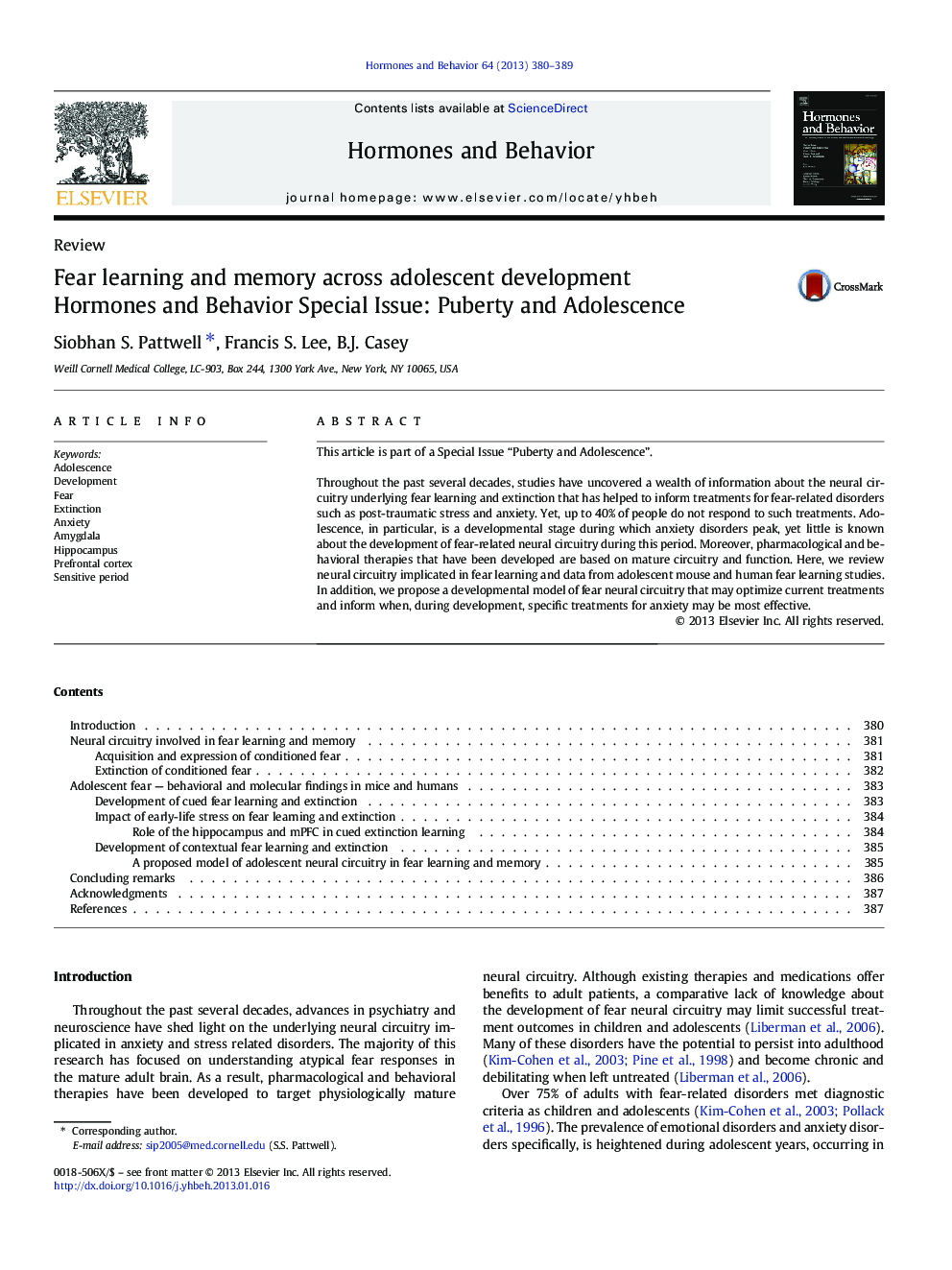| Article ID | Journal | Published Year | Pages | File Type |
|---|---|---|---|---|
| 322758 | Hormones and Behavior | 2013 | 10 Pages |
Throughout the past several decades, studies have uncovered a wealth of information about the neural circuitry underlying fear learning and extinction that has helped to inform treatments for fear-related disorders such as post-traumatic stress and anxiety. Yet, up to 40% of people do not respond to such treatments. Adolescence, in particular, is a developmental stage during which anxiety disorders peak, yet little is known about the development of fear-related neural circuitry during this period. Moreover, pharmacological and behavioral therapies that have been developed are based on mature circuitry and function. Here, we review neural circuitry implicated in fear learning and data from adolescent mouse and human fear learning studies. In addition, we propose a developmental model of fear neural circuitry that may optimize current treatments and inform when, during development, specific treatments for anxiety may be most effective.
► Adolescence is a developmental stage when anxiety disorders are peaking. ► Current therapies for anxiety disorders rely on fear extinction principles. ► Development of neural circuitry underlying extinction learning continues through adolescence. ► Parallel human and rodent experiments reveal attenuated extinction during adolescence.
